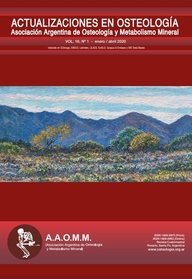La exposición prenatal a fluoruro induce cambios en la porción coronal de la cripta ósea y altera la erupción dental en crías lactantes
Autores: Victoria Interlandi, Pablo Fontanetti, Andrea Delgado, Rubén Ponce, Raquel Gallará, Viviana A. Centeno
Resumen
La erupción dental es un proceso estricta¬mente regulado y programado espacial y tem-poralmente. El objetivo del trabajo fue estudiar el efecto de la exposición prenatal a fluoruro de sodio (NaF) sobre los eventos morfológicos y celulares que ocurren en el hueso supracoronal del primer molar de crías de rata durante la eta¬pa preeruptiva. Se emplearon crías (n=6-8 por grupo) provenientes de madres que bebieron crónicamente agua con diferentes concentra-ciones de F- en forma de NaF durante la ges¬tación y lactancia: control y NaF (50 mg/L). En cortes histológicos de la mandíbula de crías de 3 y 10 días se analizaron parámetros de histo-morfometría estática en la zona supracoronal de la canastilla ósea a la altura del primer molar in¬ferior: volumen óseo trabecular [BV/TV (%)], nú¬mero de osteoclastos por milímetro (N.Oc/mm) y las variables indirectas: número de trabéculas [Tb.N (1/mm)], espesor [Tb.Th (μm)] y separa-ción trabecular [Tb.Sp (μm)]. En crías de 15 días se midió el grado de erupción [TED (μm)] del pri¬mer molar inferior. Los resultados se analizaron con el test t de Student considerando diferen¬cias significativas a p<0,05. El análisis histomor¬fométrico demostró un incremento en el BV/TV (%) del hueso supracoronal (p<0,01) asociado con disminución del N.Oc/mm (p<0,01) en crías de 3 y 10 días expuestas prenatalmente al F-. El grado de erupción dental fue menor en animales expuestos prenatalmente al F- en comparación con los controles (p<0,01). En conclusión, los resultados observados en la mandíbula de crías expuestas durante la etapa prenatal y posnatal temprana al F- sugieren un efecto disruptivo so¬bre la actividad resortiva necesaria para forma¬ción del canal eruptivo.
Palabras clave: fluoruro de sodio, etapa preeruptiva, erupción dental.






